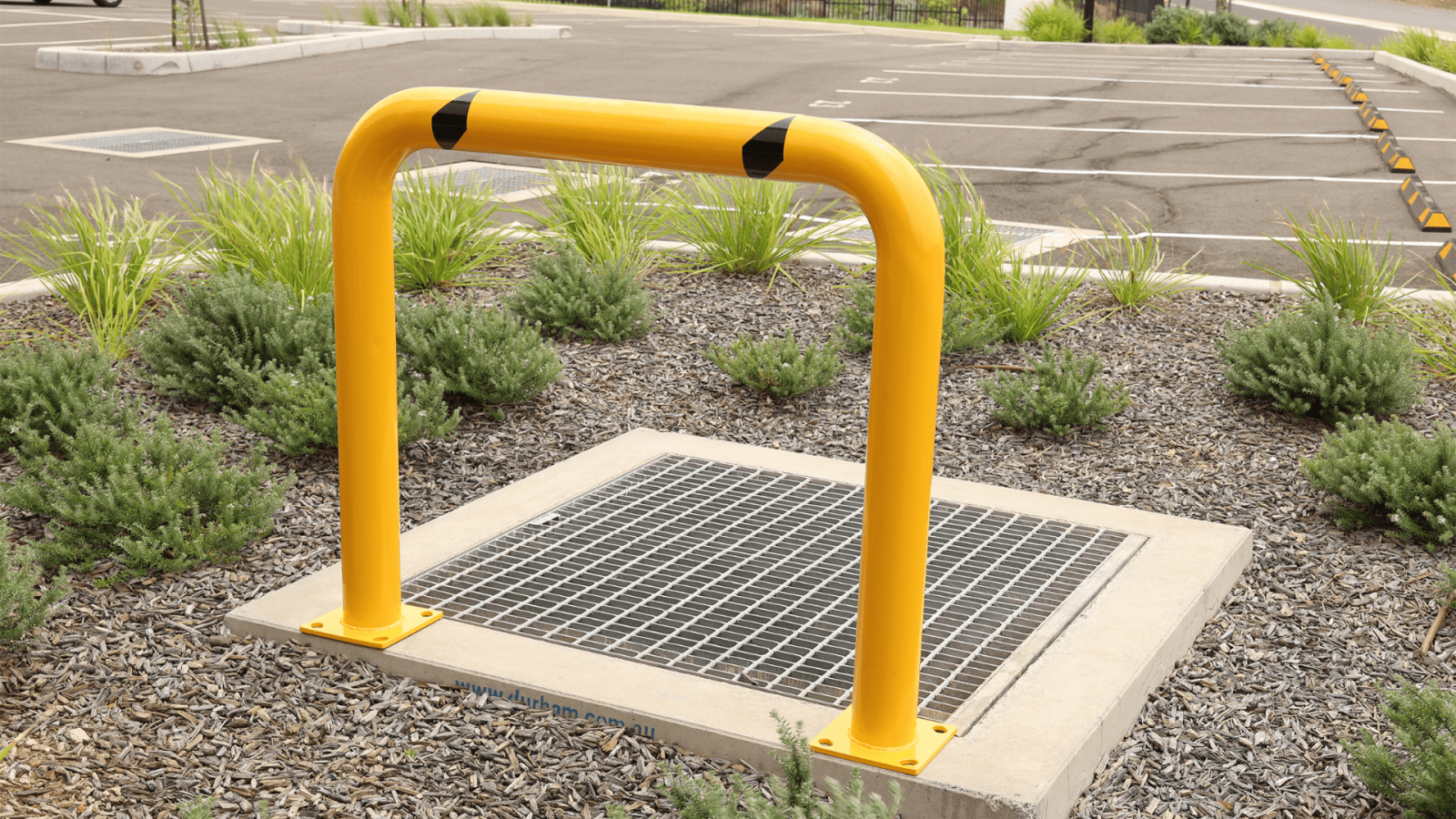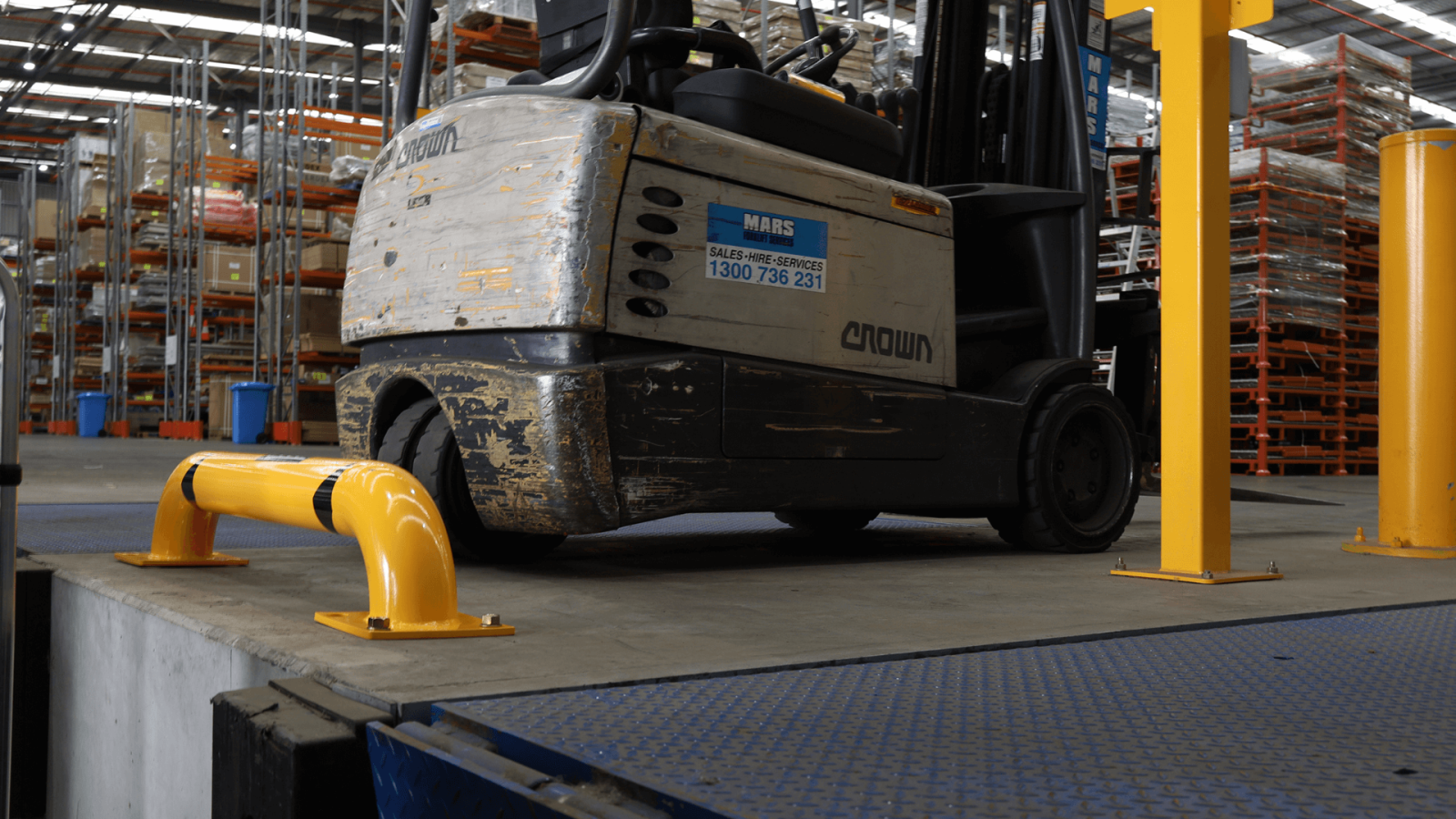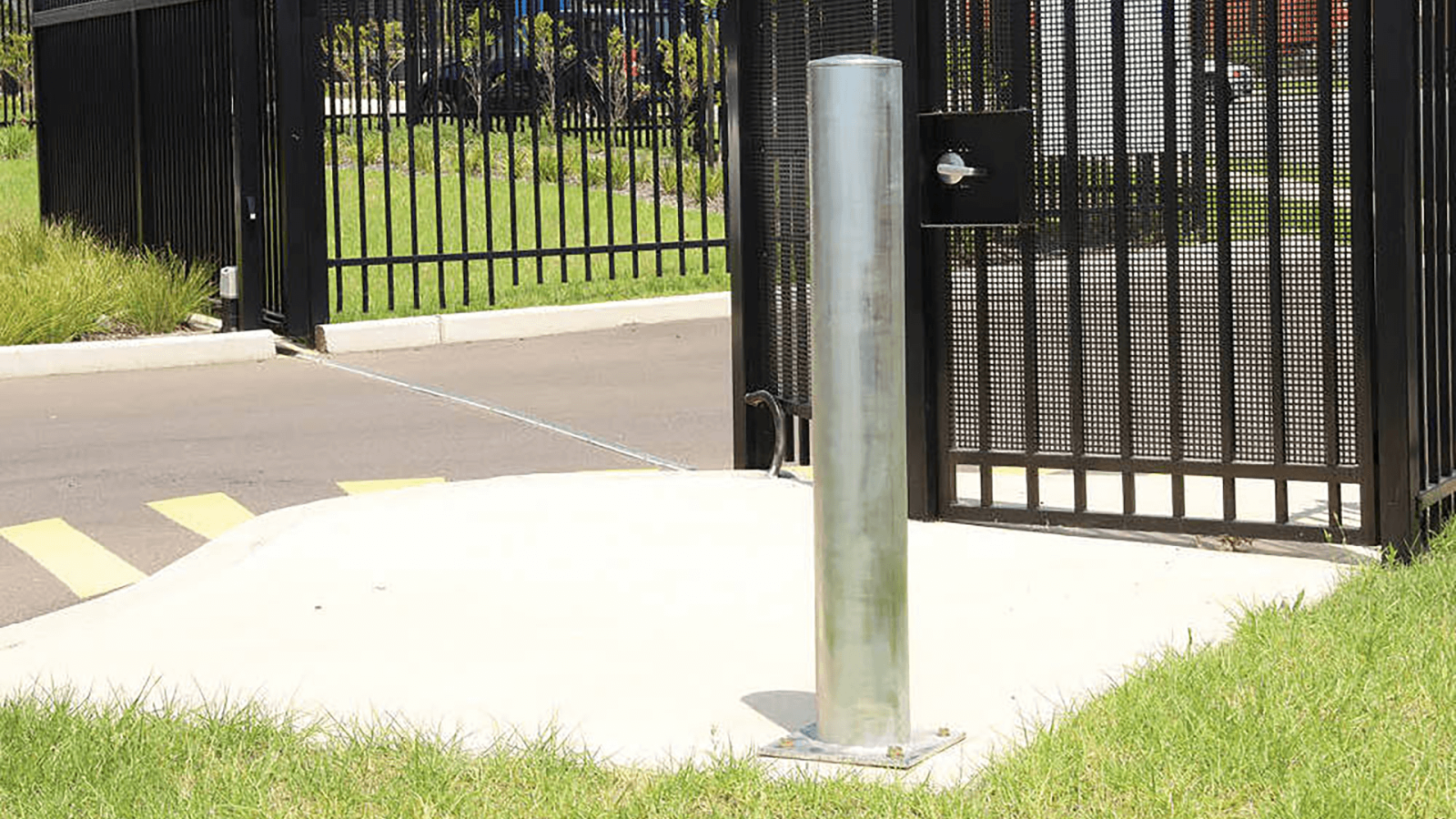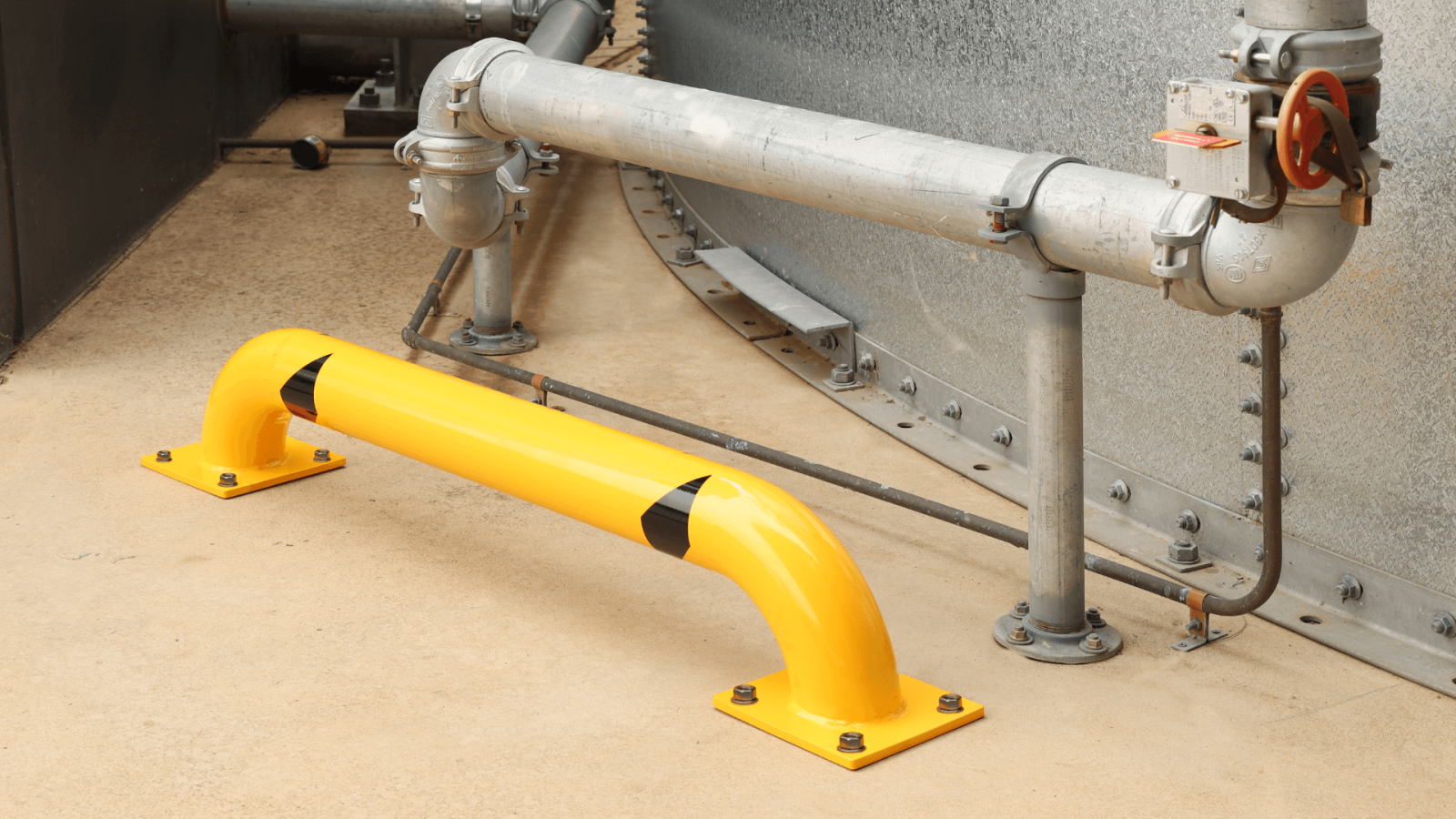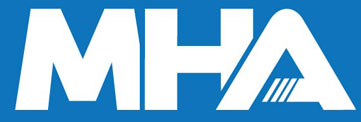7 Common Types of Safety Bollards and Their Uses
Date Posted:26 August 2025
Safety bollards are a key part of workplace safety systems, preventing vehicle collisions and protecting people. Explore the various types and how they’re used.
Verdex Insights: At a Glance
-
The Challenge: In high-traffic workplaces, vehicles, forklifts, and pedestrians often operate side by side. Without impact-resistant protection, collisions and property damage can occur, putting workers and assets at risk.
-
The Insight: Safety bollards are a simple yet powerful way to prevent accidents, guide traffic, and protect infrastructure. From fixed and removable bollards to flexible and retractable designs, they support WHS compliance while improving organisation and visibility across industrial sites.
-
The Verdex Solution: Verdex supplies heavy-duty safety bollards and barrier systems designed for warehouses, logistics hubs, construction sites, and car parks. Our WHS-compliant products help businesses control traffic flow, protect personnel, and safeguard critical equipment with durable, high-visibility protection.
What Are Safety Bollards?
Safety bollards are short, sturdy posts designed to provide a protective barrier in high-risk areas. Often made of steel or heavy-duty plastic, they are installed in workplaces, warehouses, car parks, and loading zones to guard against accidental vehicle impact and clearly define pedestrian or hazard zones. Depending on their design, bollards can be fixed, removable, or retractable, and they come in various sizes, colours, and materials to suit different applications.
Beyond just acting as physical barriers, bollards play an important role in guiding traffic flow, marking restricted zones, and ensuring compliance with workplace health and safety (WHS) regulations. Whether used indoors near machinery or outdoors along a building’s perimeter, they are a practical and cost-effective solution for improving overall safety and organisation on site.
They are often integrated alongside other essential workplace safety equipment and supplies to create a comprehensive safety system.
Why Bollards Are Essential for Workplace Safety
Safety bollards serve as a critical safety measure in various workplace environments, helping to prevent costly and dangerous incidents.
One of their key functions is to prevent vehicle collisions with structures or pedestrians. In busy warehouse environments where forklifts and trolleys operate alongside foot traffic, bollards can absorb impact and minimise damage.
Bollards also help manage traffic flow. Strategically placed bollards can guide drivers, restrict access to sensitive areas, or delineate walkways for safer pedestrian movement. When used in combination with safety barriers and security bollards, they provide an extra layer of protection and access control.
They’re instrumental in reinforcing WHS compliance and hazard zoning. Brightly coloured or reflective bollards clearly indicate restricted or high-risk areas, helping staff remain aware and alert at all times.
Bollards are also highly versatile. Indoors, they can be installed around racking systems, machinery, or doorways to prevent damage. Outdoors, they are commonly used to protect perimeters, entrances, loading bays, or even electrical and fire systems from accidental vehicle impact.
By integrating bollards into your workplace layout, you're investing in long-term safety and operational efficiency. For holistic safety coverage, they should also be supported by visible workplace safety signage and information, especially in shared zones.
7 Common Types of Safety Bollards and Their Uses
1. Fixed Bollards
Fixed bollards are permanently installed into concrete surfaces and offer the highest level of protection. Ideal for high-impact areas like warehouse entries or loading docks, they prevent vehicle incursion and protect infrastructure and staff.
Our Range of Fixed Bollard
2. Plastic or Polymer Bollards
Lightweight and corrosion-resistant, plastic bollards are ideal for indoor use or areas with low-speed vehicle movement. Often used for visual guidance or to section off pedestrian zones, they are affordable and easy to install.
Our Range of Plastic Bollards
3. Removable Bollards
Removable bollards can be taken out or repositioned as needed, making them perfect for areas where flexible access is required. They’re suitable for controlling entry to delivery zones, event spaces, or restricted areas within facilities.
4. Surface-Mounted Bollards
These bollards are bolted to the floor rather than embedded, allowing for quicker installation. While they offer less impact resistance than fixed bollards, they are a popular choice for light-duty indoor applications such as protecting shelving or corners.
5. Flexible or Spring-Back Bollards
Flexible bollards bend on impact and return to their original position, reducing damage to both the bollard and vehicle. They're commonly used in car parks, loading bays, or areas where occasional contact with vehicles is expected.
6. Retractable (Telescopic) Bollards
Retractable bollards can be lowered into the ground when access is required and raised when security or restriction is needed. They’re ideal for multi-use areas like driveways, emergency access routes, or loading bays with occasional vehicle traffic.
7. Hazard Zone Bollards with Chains or Belts
These bollards come with connecting chains or retractable belts to cordon off hazardous zones or walkways. Suitable for temporary hazard management, they are commonly seen around machinery, spills, or maintenance areas.
These bollards are often part of a broader safety solution that includes PPE clothing and safety gear to ensure all employees remain protected from site-specific risks.
Choosing the Right Bollard for Your Workplace
Selecting the appropriate bollard depends on several key factors, each tailored to your operational environment.
First, consider the type of traffic in your workplace. Forklifts, pallet jacks, and delivery trucks all require bollards with different impact resistance. Heavier vehicles necessitate more robust bollards, often fixed steel or reinforced designs.
Second, assess whether the bollards will be used indoors or outdoors. Outdoor bollards should be weather-resistant, while indoor installations may focus more on flexibility and visual cues.
Determine whether the bollard needs to be permanent or removable. For example, fixed bollards are great for long-term protection, whereas removable or retractable ones offer flexibility for multi-use spaces.
Lastly, always check for compliance with WHS regulations and impact ratings. Ensuring your bollards meet Australian safety standards will help reduce liability and increase peace of mind.
In environments where vehicle traffic overlaps with high foot traffic, consider integrating bollards with workplace first aid kits nearby to improve response readiness in the event of an incident.
By taking these factors into account, you'll be well-positioned to choose bollards that enhance both safety and efficiency in your workplace.
Get in Touch About Our Safety Bollards
Looking to improve safety and organisation in your facility? Our team offers expert advice on selecting and installing safety bollards suited to your needs. Whether you require fixed, removable, or flexible options, we have a wide range of bollards to support vehicle and pedestrian safety both indoors and outdoors.
Speak to us today to learn more about our high-quality safety bollards and explore our full range of material handling equipment. Reach us by:
-
Emailing sales@verdex.com.au
-
Filling out our contact form
We’re here to help you find the right solutions that support a safer, more efficient workplace.
Frequently Asked Questions
Are all bollards designed to stop vehicles?
Not all bollards are impact-resistant. Some are primarily visual deterrents or used to indicate zones. Heavy-duty steel bollards can stop vehicles, while plastic or flexible ones are for guiding traffic or marking hazards.
Can safety bollards be used indoors?
Yes, many bollards are specifically designed for indoor use. These include surface-mounted, flexible, and plastic bollards to protect shelving, racking, doorways, and pedestrian areas from equipment like forklifts and trolleys.
What colours are recommended for safety bollards?
Highly visible colours like yellow, red, or orange are most commonly used. These colours alert drivers and pedestrians to hazards and improve visibility, especially in low-light conditions or busy environments.
What’s the difference between removable and retractable bollards?
Removable bollards are manually lifted out and stored elsewhere when not in use. Retractable bollards, on the other hand, retract into the ground, allowing quick access without needing removal or storage.
































































































































 Trolleys & Hand Trucks
Trolleys & Hand Trucks Cage Trolleys
Cage Trolleys Cleaning Carts & Trolleys
Cleaning Carts & Trolleys Construction Trolleys
Construction Trolleys Custom Trolleys
Custom Trolleys Hand Trucks & Dollies
Hand Trucks & Dollies Laundry/Linen Trolleys
Laundry/Linen Trolleys Lifting Trolleys
Lifting Trolleys Order Picking Trolleys
Order Picking Trolleys Panel Cart Trolleys
Panel Cart Trolleys Platform Trolleys
Platform Trolleys Powered Trolleys
Powered Trolleys Shelf & Tiered Trolleys
Shelf & Tiered Trolleys Shopping Trolleys
Shopping Trolleys Stainless Steel Trolleys
Stainless Steel Trolleys Tool Trolleys
Tool Trolleys Utility & Service Carts
Utility & Service Carts Lifting & Handling Equipment
Lifting & Handling Equipment Forklift Attachments
Forklift Attachments Jib Attachments
Jib Attachments Lifting Hoists & Pallet Hooks
Lifting Hoists & Pallet Hooks Load Skates & Tow Tugs
Load Skates & Tow Tugs Manual Stackers & Lifters
Manual Stackers & Lifters Pallet Jacks
Pallet Jacks Pallet Lifters
Pallet Lifters Pallet Rotators & Dispenser
Pallet Rotators & Dispenser Powered Pallet Trucks & Electric Lifters
Powered Pallet Trucks & Electric Lifters Scissor Lift Trolleys and Tables
Scissor Lift Trolleys and Tables Conveyor Equipment
Conveyor Equipment Conveyor Frames & Stands
Conveyor Frames & Stands Roller & Skate Conveyors
Roller & Skate Conveyors Ladders & Access Equipment
Ladders & Access Equipment Container & Yard Ramps
Container & Yard Ramps Ladders & Step Stools
Ladders & Step Stools Work Platforms & Crane Cages
Work Platforms & Crane Cages Drum Handling Equipment
Drum Handling Equipment Drum Storage & Bunding
Drum Storage & Bunding Drum Trolleys & Lifters
Drum Trolleys & Lifters Forklift Drum Handling
Forklift Drum Handling Waste Handling & Bins
Waste Handling & Bins Bin Lifters & Tippers
Bin Lifters & Tippers Plastic Waste & Wheelie Bins
Plastic Waste & Wheelie Bins Steel Waste & Tipping Bins
Steel Waste & Tipping Bins Waste Carts
Waste Carts Dangerous Goods Storage & Spillage
Dangerous Goods Storage & Spillage Aerosol Cans Storage Cages
Aerosol Cans Storage Cages Bunded Pallets & Storage
Bunded Pallets & Storage Corrosive Goods Storage Cabinets
Corrosive Goods Storage Cabinets DG Storage & Trolleys
DG Storage & Trolleys Flammable Liquid Cabinets
Flammable Liquid Cabinets Forklift Gas Storage Cages
Forklift Gas Storage Cages Site Storage
Site Storage Spill Kits
Spill Kits Shelving & Storage Equipment
Shelving & Storage Equipment Stillage & Transport Cages
Stillage & Transport Cages 750 Series Cage Configurations
750 Series Cage Configurations Heavy Duty Cabinets
Heavy Duty Cabinets Heavy Duty Shelving
Heavy Duty Shelving Mega Bins & Pallets
Mega Bins & Pallets Packing & Workbenches
Packing & Workbenches Parts Trays & Stor-Pak Bins
Parts Trays & Stor-Pak Bins Pegboard & Louvre Panels
Pegboard & Louvre Panels Plastic Bins & Crates
Plastic Bins & Crates Plastic Handling Solutions Bins
Plastic Handling Solutions Bins Plastic Pallets
Plastic Pallets Stack & Nest Bins
Stack & Nest Bins Pallet Racking Accessories
Pallet Racking Accessories Workplace Equipment
Workplace Equipment Modular Workbenches
Modular Workbenches Electric Height-Adjustable Workbenches
Electric Height-Adjustable Workbenches Floor Matting
Floor Matting General Workplace Equipment
General Workplace Equipment Industrial Weighing Scales
Industrial Weighing Scales Packaging Machinery
Packaging Machinery Stationery Cupboards
Stationery Cupboards Storage and Stillage Cages
Storage and Stillage Cages Tool Trolleys
Tool Trolleys Tooling Cabinets
Tooling Cabinets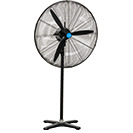 Workshop Fans and Coolers
Workshop Fans and Coolers Safety Barriers, PPE & Signage
Safety Barriers, PPE & Signage Barriers & Bollards
Barriers & Bollards First Aid Equipment
First Aid Equipment Gloves, Knives and PPE
Gloves, Knives and PPE Signage
Signage Cleaning & Site Supplies
Cleaning & Site Supplies Cleaning Equipment
Cleaning Equipment Cleaning Trolleys
Cleaning Trolleys Rubbish Bins
Rubbish Bins Signs & Traffic Supplies
Signs & Traffic Supplies Construction Equipment
Construction Equipment Construction Trolleys
Construction Trolleys Waste Handling
Waste Handling General Site Equipment
General Site Equipment Concrete Equipment
Concrete Equipment Site Storage
Site Storage Lifting Equipment
Lifting Equipment Verdex Specials
Verdex Specials
